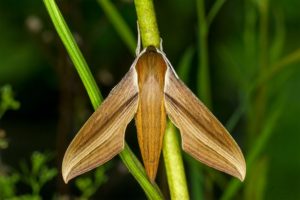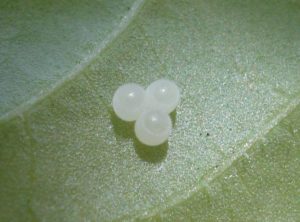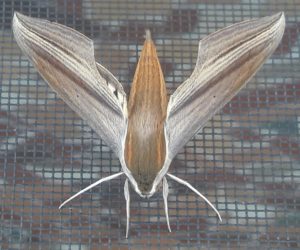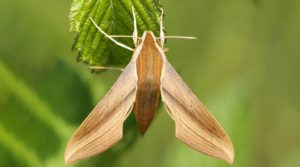Tersa Sphinx Moth (Xylophanes tersa)
Tersa sphinx of the Sphingidae or hawk moth family has a wide range spreading from the United States to Mexico, parts of West Indies, and even Central America and South America. The two subspecies of the moth include Xylophanes tersa chaconi and Xylophanes tersa tersa.
live.staticflickr.com
Scientific Classification
- Family: Sphingidae
- Genus: Xylophanes
- Scientific Name: Xylophanes tersa
Description and Identification
Caterpillar
The tersa sphinx moth larvae growing to approximately 8cm have varying colors from pale to dark green. The light or dark-colored eyespots situated on their abdomen’s first segment make them look ditto-like snakes. The larvae are mostly referred to as ‘sphinx’ as they retract their thoracic segments and head into their abdomen. All specimens possess a horn at the back. Matured larvae make burrows in the plant debris, where they also build a cocoon and prepare for the pupal phase.
Adult Moth
Sexual Dimorphism: Present but less prominent
The females are bigger with a rounded appearance, while the males have a more angular shape. The former even possess a rounder abdomen than the latter.
Color and Appearance
Forewings: When opened, it is pale brown on the upperside and lavender gray near the base, intersected with dark brown lines. When closed, there is no significant change in the color and pattern.
Hindwings: When opened, the upperside remains dark brown with a band comprising whitish wedge-shaped marks. When closed, the color is unchanged though the wedge-shaped marks are less visible.
Average Wingspan: 6 – 8 cm
Flight Pattern: Consistent
Season: May – October; February – November
Quick Facts
| Distribution | Different parts of the United States from Massachusetts to South Florida, Nebraska to New Mexico, southern Arizona); West Indies, South America (Bolivia, Brazil, Argentina, Paraguay), and Central America |
| Habitat | Mostly near woodlands like other moths of its family |
| Predators | Wasps, and birds |
| Lifespan of Adults | About one month |
| Host Plants | False buttonweed, catalpa, wild coffee, ice cream bean |
| Adult Diet | Nectar of flowers like honeysuckle |
Scientific Classification
- Family: Sphingidae
- Genus: Xylophanes
- Scientific Name: Xylophanes tersa






